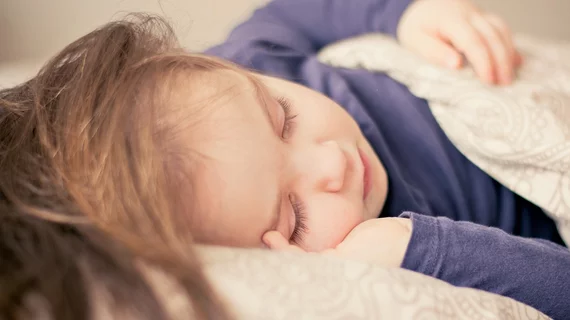Snoring in children could affect neurological development, brain MR imaging finds
Habitual snoring in children could affect their neurological development, according to a new large-scale MR imaging study out of the University of Maryland School of Medicine.
Kids grappling with this issue have structural changes in their brain, which may account for behavioral problems such as inattention or hyperactivity, experts wrote Tuesday in Nature Communications. The study—funded by the National Institute on Drug Abuse, among others—is the largest of its kind, incorporating images from more than 10,000 children ages 9-10.
“For the first time, we see evidence on brain imaging that measures the toll this common condition can take on a child’s neurological development,” study author E. Albert Reece, MD, PhD, MBA, dean of the University of Maryland School of Medicine, said April 13. “This is an important finding that highlights the need to properly diagnose snoring abnormalities in children.”
For the study, scientists analyzed MRI scans collected from children enrolled in the Adolescent Brain Cognitive Development study. They discovered that those who snored three or more times per week, as reported by their parents, were more likely to have thinner gray matter in several parts of the brain’s frontal lobes. These critical areas of the mind are responsible for impulse control and higher reasoning, with a thinner cortex correlating with behavioral disturbances.
Researchers are planning follow-up analyses to deduce if kids who continued grappling with snoring issues showed worsening findings on brain MR images. They urged parents who have witnessed this problem in their children to seek treatment.
“If you have a child who is snoring more than twice a week, that child needs to be evaluated,” lead author Amal Isaiah, MD, PhD, an associate professor of head and neck surgery and pediatrics at UMSOM, said in a statement. “We now have strong structural evidence from brain imaging to reinforce the importance of diagnosing and treating sleep disordered breathing in children.”
You can read more about the study in Nature Communications here or find a summary from the National Institutes of Health here.

